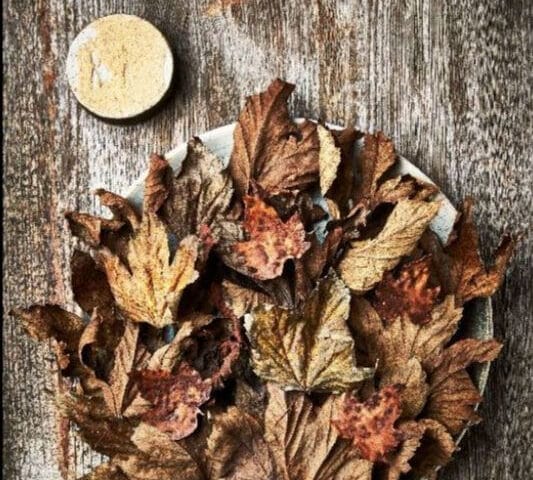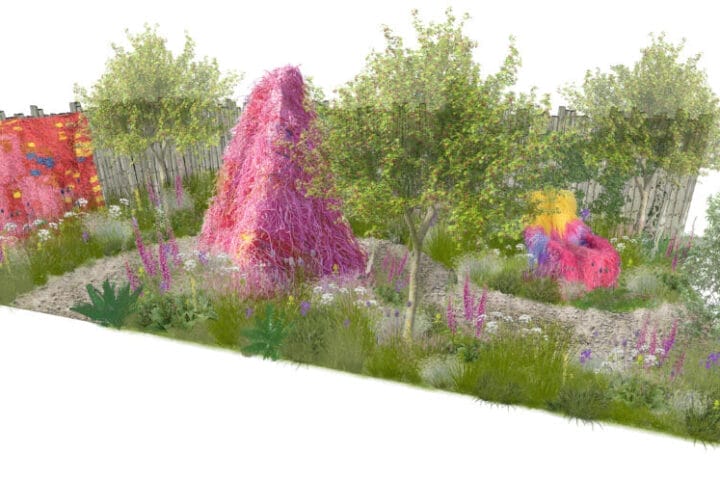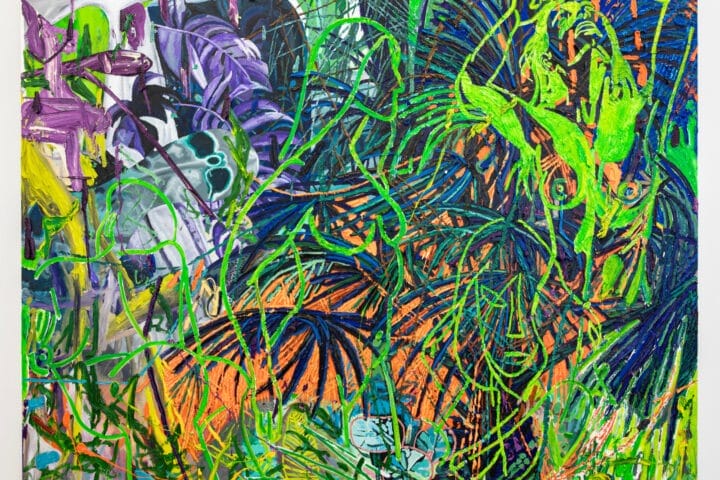Adrian Ghenie:The Hooligans: November 20 – January 16, 2021. 540 West 25th Street. New York.
The Hooligans, Adrian Ghenie’s fourth solo exhibition with Pace Gallery, brings together nine paintings and three drawings, all made during the last year. Influenced by Impressionist painters, as well as J.M.W. Turner, Vincent Van Gogh, and Paul Gauguin, this new body of work continues Ghenie’s exploration of abstracting figures, layering shapes, and using gestural painting techniques to create complex images intertwined with art historical narratives. Ghenie’s meditation on the idea of “hooliganism” examines the crucial role of rebellion in an artist’s process, working to reject or ignore traditionalism to create the new.
Since the mid-2000s, Adrian Ghenie has created drawings, collages, and paintings that mine the history of art as well as the darkest chapters of Europe’s past, notably World War II and the subsequent rise of communism, including in his native Romania. Somber and gritty, his canvases bear gestural, abstract brushstrokes that build as much as mar their representational contents. Beginning in 2014, the artist began to work from assembled images. In recent years, his focus shifted to an exploration of revolutionary figures from the late 19th century such as Vincent Van Gogh and Charles Darwin, using them as points of departure more than inspiration. Ghenie’s visceral, even iconoclastic, impasto conjures distortions of memory, as well as fraught experiences that exceed and collide with official accounts of history.

Primarily portraits of nineteenth-century artists, the works on view in The Hooligans suggest a genealogy that begins with J.M.W. Turner, runs through the Impressionists, and ends with Post-Impressionist figures, such as Vincent Van Gogh and Paul Gauguin. Quiet disruptors, these painters affirmed the materiality of oil paints with their loose brushstrokes, while amplifying painting’s optical qualities, namely its immersive luminosity and chromatic richness. Radicals in their time, their work unsettled the Romantic period, reflecting changes to modern vision as both bodily and subjective – a phenomenon that the nineteenth century’s new optical instruments and scientific experiments had already put underway. Ghenie, whose past work has explored the relationship between painting and cinema, continues to mine art’s ever-evolving relationship to history, vision and technology, as suggested by the presence of anachronistic details, such as sneakers and baseball caps, VR goggles and security cameras, that interrupt broad sections drawn from familiar nineteenth century paintings.
Meditating on the idea of hooliganism in art, Ghenie has shared the following statement about this new body of work:
When one stays for long hours in a studio year after year—besides doubting everything—you start to ask yourself what you are looking at when you look at paintings from the past. In time you develop a habit for peeling them like onions. Twenty years ago, I saw the surface, the skill, the prettiness. Now I see the energy behind this, the violence.
When I look at the Impressionists, I have the strange feeling that I am looking at something very schizophrenic. Behind those harmless colorful landscapes there is an incredible, destructive force; camouflaged. It is an act of hooliganism. It’s hard to ask someone to see that Claude Monet’s “Impression, soleil levant” from 1872 is not a sweet sea landscape with a sun rising but a bomb so powerful that it could put the Greek Roman canon to rest for good.
Looking again at these “harmless” paintings drew me deeper into the concept of hooliganism in art—the hooligan side of the artist, how crucial it is, how it manifests. The word hooliganism suggests something loud, exterior, aggressive and in your face. But in art it shows itself in the most discrete ways. Caravaggio’s pilgrims with dirty feet, for example. He was the first to paint the actual dirt on their feet. Such a small detail but it had such power, it could defy the church. Or when he chose a prostitute drowned in the Tiber as his model for the dead Virgin Mary. Or Cézanne’s bathers, for example—they are mockery of the Greek Roman and Prussian canons, but this mockery made Picasso possible. Turner! Oh my God! To paint a train… when everybody was obsessed with the greatness of nature and the heroism of the past.
It seems that painting is in a crisis. It comes in waves or cycles. But in looking closer, it’s always hard to describe this crisis. It something we feel rather than explain. When I feel that the medium of painting is suffering a mutation or a contamination, more precisely I feel that painting is again becoming literature or journalism. It happened back then as well. Imagine going back in time and visiting a Pre-Raphaelite show. You know it is literature. The medium of painting is strangled by that overdose of symbolism. Hooliganism saved painting by focusing on the medium itself, ignoring the “grand” subject matter and fighting only for the surface. It cleaned painting of literature and restored its autonomy. Even today, we consider this an act of restitution.
Was it clear then? Probably not. We never see it when it happens.
Turn your attention to landscape painting—such a minor genre for centuries but we have only to think of its attempt to impress Paris with apples and haystacks. Putting aside mythology, religion and the Greek Roman canon in these innocuous landscape paintings was in fact an act of hooliganism.
The hooligan inside the artist will not allow the soul to dry with pure intellect. It is a vital force that translates into an ability to rebel, reject, ignore or mock while staying away from ideological hate or fundamentalism. How else can I see the Impressionists or Turner, Van Gogh or Gauguin, if not as monuments to this quality? This exhibition comes on the heels of two major solo museum exhibitions at The State Hermitage Museum, St. Petersburg, Russia; and Palazzo Cini, Venice, Italy in 2019.
Adrian Ghenie (b. 1977, Baia Mare, Romania) adopts elements from the tradition of history painting while subverting its conventions by representing provocative subjects and undermining norms of realism. A formally trained painter, he synthesizes his technical abilities with conceptual tendencies from Dada, merging representational and abstract imagery. His practice conflates and extends painting techniques of the past, displaying both a Baroque mastery of chiaroscuro and a gestural handling of paint indebted to Abstract Expressionism. With pronounced brushwork that
introduces distortions of depicted space and his subjects’ features, Ghenie’s art unearths feelings of vulnerability, frustration, and desire, invoking human experience and themes of the collective unconscious.
Pace is a leading contemporary art gallery representing many of the most significant international artists and estates of the twentieth and twenty-first centuries.
Under the leadership of President and CEO Marc Glimcher, Pace is a vital force within the art world and plays a critical role in shaping the history, creation, and engagement with modern and contemporary art. Since its founding by Arne Glimcher in 1960, Pace has developed a distinguished legacy for vibrant and dedicated relationships with renowned artists. As the gallery enters its seventh decade, Pace’s mission continues to be inspired by a drive to support the world’s most influential and innovative artists and to share their visionary work with people around the world.
Pace advances this mission through its dynamic global program, comprising ambitious exhibitions, artist projects, public installations, institutional collaborations, performances and interdisciplinary projects through Pace Live, and curatorial research and writing. Today, Pace has nine locations worldwide: two galleries in New York—including its newly opened headquarters at 540 West 25th Street, and an adjacent 8,000 sq. ft. exhibition space at 510 West 25th Street—as well as galleries in Palo Alto, London, Geneva, Hong Kong, and Seoul. In July 2020 Pace opened a temporary gallery space in East Hampton, New York that will be programmed through October 2021. Additionally, the gallery’s seasonal exhibition space in Palm Beach will be open through spring 2021.










